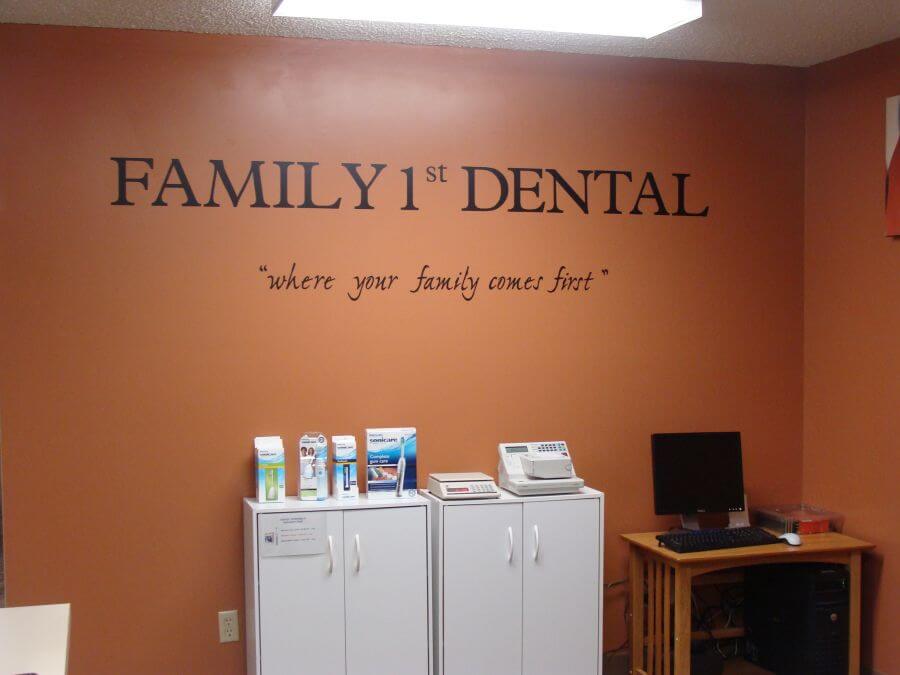X-rays are high frequency light (or radiation) that penetrates different substances with different rates and absorption.
In dentistry, there are typically four types of X-rays:
- Periapical x-rays: used to look at the root tip of the tooth
- Bite-wing x-rays: used to look between the teeth for decay
- Occlusal x-rays: are primarily used for children to show the dentist the development of the child’s permanent teeth. Some children have congenitally missing teeth, which means they were born without a permanent tooth.
Panoramic x-rays: used to see the entire jaw bone, check for tumors and growths, view the position of your wisdom teeth, unerrupted teeth, and even extra teeth.
Are They Safe?
Yes. Dental x-rays produce a low level of radiation that the public and professional communities consider safe. Many precautions are taken to ensure their safety including using lead aprons, shields, and a fast process which limits exposure. In fact, our everyday environment contains natural radiation and dental x-rays have far less radiation than you might think.
You will be happy to know that a single conventional dental x-ray delivers 3,000 times less radiation than an upper GI series, 250 times less than a chest x-ray, and 50 times less radiation than a typical day of background radiation from the sun. Dental x-rays are both safe and effective, and can be used during pregnancy. All Family 1st Dental offices have integrated digital x-rays into their offices, which have a minimal radiation exposure.
Digital x-rays offer additional advantages, with an additional 80 percent reduction in the radiation exposure to the conventional dental x-rays stated above. Using digital x-rays there is no need for film, processing chemicals, and the dentist gets the image in about 3 seconds. The exposure to radiation with digital x-ray is very minimal.
How Often Will I Need Dental X-Rays?
Each patient is unique and the number and type of dental x-rays needed is based on their individual dental health needs. If you are concerned with the recommended necessity of x-rays, please discuss your feelings with your doctor and dental hygienist to gain more information and to create a healthy plan for you. The most common type of dental x-ray is the bitewing, it shows in between posterior teeth and is usually taken in pairs or sets of four. The ADA recommendation for a posterior bitewing exam for an adult with decay present or an increased risk for cavities is every six to 12 months, whereas someone with no decay or increased risk may be able to go as long as two to three years between having X-rays taken.
New Patients Welcome!
Visit Our Le Mars Dental Office
Dentist LeMars

Le Mars Location
29 Plymouth Street Northeast,
Le Mars, IA 51031
(712) 546-8823

Our Dental News
Dentist LeMars
Unveiling Lesser-Known Realities About Oral Cancer: What You Need to Know | Dentist 51031
Did you know that according to The American Academy for Oral Systemic Health, oral cancer claims one American life every hour of every day? It’s shocking, isn’t it? At Family 1st Dental of LeMars, we believe in shedding light on […]
Learn MoreCraze Lines: Understanding Their Nature and Impact on Your Dental Health | Dentist Near Me
Have you ever noticed faint lines on the surface of your teeth that resemble tiny cracks? You may be experiencing what’s commonly known as craze lines. While they might seem alarming at first glance, craze lines are often harmless and […]
Learn MoreHandling Dental Emergencies: What You Need to Know | LeMars Dentist
Accidents are inevitable, but knowing how to respond can make all the difference between saving and losing a tooth. A dental emergency, whether it’s a tooth injury or gum problem, requires prompt attention to prevent permanent damage. Here’s what you […]
Learn More




